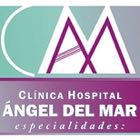
Cattle Ranches on the Coast
You see cows on the back of pick-up trucks in Puerto and you have to wonder where they come from and where they are going. Well, it turns out that cattle raising is really big in Bajos de Chila, Puerto Escondido and Santa María Colotepec. (But not as big as a little further up the coast in Río Grande.)
Or better said, cattle ranching is really big and small here. The big ranches have over 100-head of cattle, not including buffalos, and others as few as 10 cows. And then there are people who keep a cow in their backyard to provide milk and cheese for their families.
We started our investigation by asking Daniela Rojas Almaraz, the owner of La Peregrina cheese shop on Camino a Puerto Angelito, near the Rinconada, where she gets the milk to make her fresh cheese and yogurt. She took us to the corral of Esteban Ríos Ríos in Puerto Escondido, near the Cerro de la Vieja, on the dirt road that connects highway 200 to Colonia Aeropuerto, where we watched the cows being milked by hand.
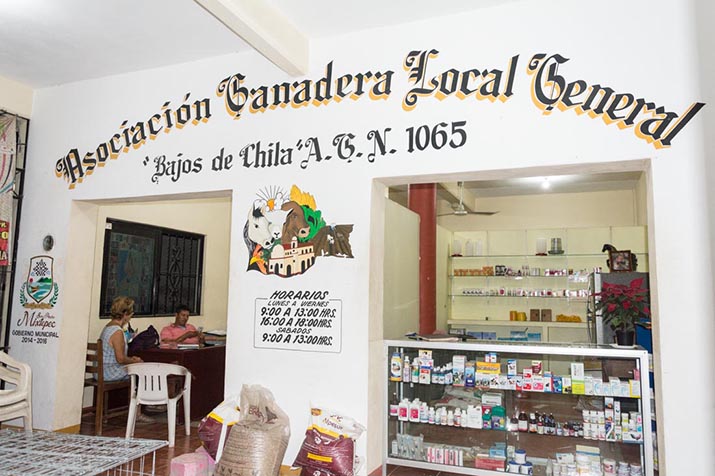
Our inquiries then led us to the local cattle association in Chila (Asociación Ganadera Local General) whose 90 members have anywhere between five and 120 head of cattle, with the average ranch having between 30 and 35 cows and calves.

Cattle ranching began in Chila in the 1950s with the extension of Highway 131 (then a dirt road) from Sola de Vega to Puerto Escondido. Today most ranchers here have their roots in Sola de Vega.
Given the semi-arid, tropical climate of the coast and the fact that the cattle is free range, the recommended pasturage is one hectare per bovine. During the dry season, however, many ranchers supplement their herds’ diet with fodder made from locally grown alfalfa, corn, peanuts and sesame seeds.
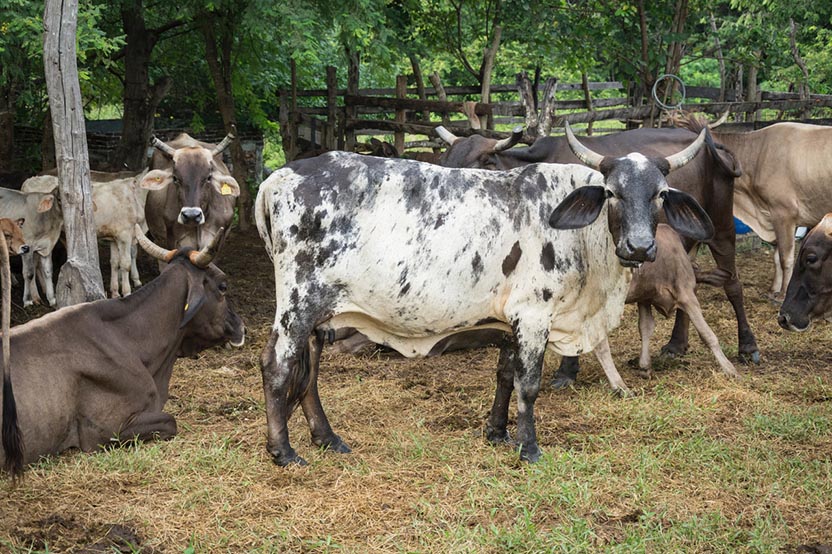
Bull calves (toretes) often wind up being sold at the weekly cattle market in San Antonino Castillo Velasco in the Central Valley of Oaxaca. The buyers are ranchers from other states with more favorable climates where the cattle are fattened. Locally, an 8-month old bull-calf goes for 7,000 pesos, an 18-month-old for 12,000.
As might be expected, cattle rustling is a major problem even though all the animals are registered and tagged.
All the tasajo, steak and chopped meat sold in the market are from local ranches. The best is from three-year old bull calves and young cows. But since the meat isn’t graded, it may also come from an old cow.
In January, we visited Ángel Ríos Ramírez at his home in the center of Chila; from there we went to his ranch, a 15-minute drive into the hills. He keeps his pigs and chickens in the backyard as well as calves recently separated from their mothers.

Ángel uses maize to make fodder to fatten his cows in his backyard. The corn cobs are first removed from the stalk to be ground into flour for the family’s tortillas. The rest of the plant is ground up into cattle feed.
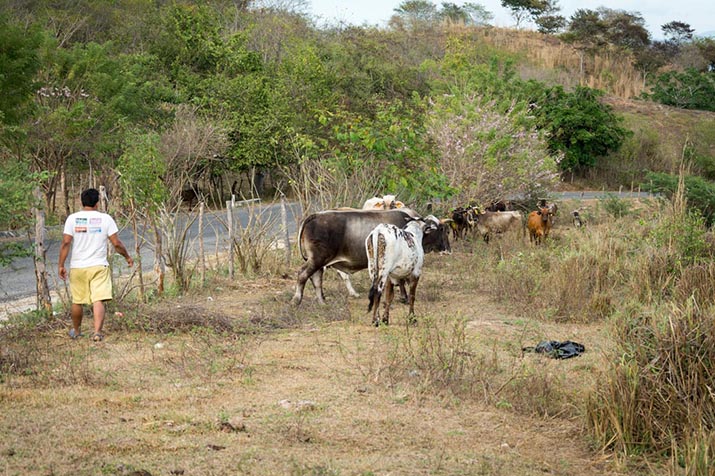
Ángel has 20 cows and calves in his herd, including the ones at his house. He had a bull for five years, but it was killed by a snake bite. When we got to the ranch, Ángel kept honking the horn to get the cows’ attention. Then he led them to the corral.
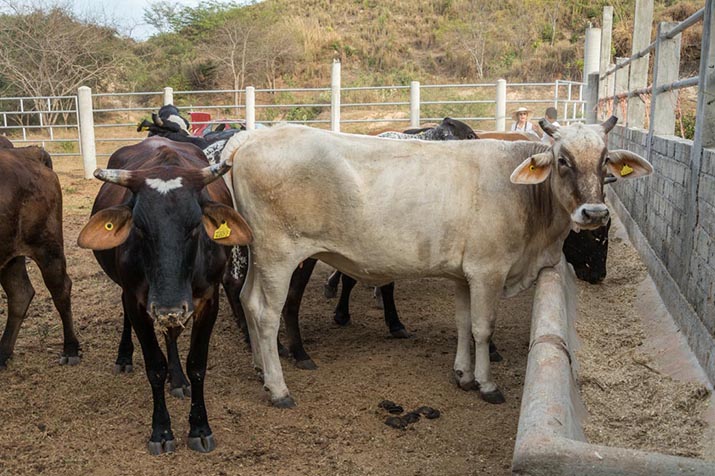
The cows ate first, while the calves waited for their turn.


Ángel plans to build a house for his family on his 25-hectare ranch.
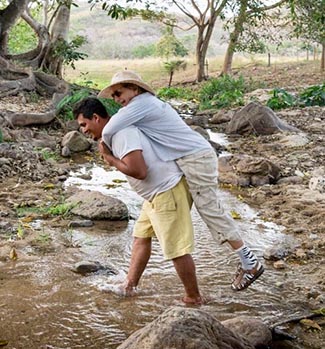
Then we visited his mother’s ranch. Ángel very graciously carried me over the stream on his back. His grandfather, who had been a mule driver bringing goods from Sola de Vega to the coffee plantations, moved to Chila from Sola de Vega with his cows around 70 years ago when highway 131 from Sola de Vega to Puerto Escondido opened. The family has been ranching here ever since.




